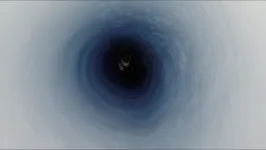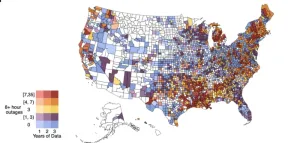(Press-News.org) INFORMS Journal Manufacturing & Service Operations Management New Study Key Takeaways:
Matching supply and demand of organs can provide broader sharing in a way that results in greater transplant equity.
By indiscriminately enlarging the pool of supply locations from where patients can receive offers, they tend to become more selective, resulting in more offer rejections and less efficiency.
The model accounts for the variation of “incidence of disease” (i.e., demand) and “availability of deceased-donor organs” (i.e., supply) and allows for variations in how broadly a donor hospital shares its organs.
BALTIMORE, MD, May 1, 2023 – As it currently stands, U.S. policies around organ transplantation are moving toward broader sharing of organs, with the goal of improving geographic equity. It’s a great goal, but not being achieved. These policies have gone through two major modifications in the last 10 years, but to no avail. Now, researchers are introducing a new model in a paper published in the INFORMS journal Manufacturing & Service Operations Management, which recommends a more efficient and equitable method to allocate organs with a policy that balances the supply (deceased donors) to demand (waiting list patients) ratios across geographies.
“This method is better than the current U.S. policy (Acuity Circles) in achieving geographic equity while also improving efficiency,” says S. Raghavan of the University of Maryland.
“Policymakers should move away from the ‘one size-fits-all’ approach and focus on matching supply and demand to develop organ allocation policies that score well in terms of efficiency and geographic equity.”
In the study, “Improving Broader Sharing to Address Geographic Inequity in Liver Transplantation,” the model accurately predicts the change in a patient’s organ-offer acceptance probability due to a change in policy. The researchers used liver transplantation data from the Scientific Registry of Transplant Recipients (SRTR), which included information on all donors, waitlisted candidates and transplant recipients in the U.S. Based on their model’s predictions, the researchers concluded that broader sharing in its current form (i.e., Acuity Circles) may not be the best strategy to balance geographic equity and efficiency.
Raghavan, alongside his co-authors Shubham Akshat of Carnegie Mellon University and Liye Ma of the University of Maryland, says that by indiscriminately enlarging the pool of supply locations from where patients can receive offers, they tend to become more selective, resulting in more offer rejections and less efficiency.
“This model would account for the variation of ‘incidence of disease’ (i.e., demand) and ‘availability of deceased-donor organs’ (i.e., supply), and allow for variations in how broadly a donor hospital shares its organs (i.e., how far it will be shared),” says Akshat, a professor in the Tepper School of Business at CMU. “Although this may not sound immediately fair, it results in a policy with greater equity than the current transplant policy.”
The researchers argue that if the suggestions of this work are followed by the U.S. government, it is likely that the large differences that are seen in waiting times will diminish for organs across transplant centers across the country. Thus, access to deceased donor organs will be similar across transplant centers, making the system fairer for patients.
Link to full study.
About INFORMS and Manufacturing & Service Operations Management
INFORMS is the leading international association for operations research and analytics professionals. Manufacturing & Service Operations Management, one of 17 journals published by INFORMS, is a premier academic journal that covers the production and operations management of goods and services including technology management, productivity and quality management, product development, cross-functional coordination, and practice-based research. More information is available at www.informs.org or @informs.
###
Contact:
Ashley Smith
443-757-3578
asmith@informs.org
Subscribe and stay up to date on the latest from INFORMS.
Sign Up For Email Updates
END
TAMPA, Fla. (May 1, 2023) – Subglacial lakes that never see the light of day are among the least accessible frontiers of science, brimming with more tales yet untold than even the planets of our solar system. One thing seems certain: where there is water, there is life -- even if said water is at the bottom of a frigid lake, in pitch darkness, below more than a half mile of the West Antarctic Ice Sheet.
As reported in AGU Advances, scientists analyzed the chemical fingerprint of the ocean and microbes retrieved from sediments and water at the bottom of a subglacial ...
Images // Video
Couches, tables, sleeves and more can turn into a high-fidelity input device for computers using a new sensing system developed at the University of Michigan.
The system repurposes technology from new bone-conduction microphones, known as Voice Pickup Units (VPUs), which detect only those acoustic waves that travel along the surface of objects. It works in noisy environments, along odd geometries such as toys and arms, and on soft fabrics such as clothing and furniture.
Called SAWSense, for the surface acoustic waves it relies ...
WASHINGTON, DC – The Department of Energy’s (DOE’s) Office of Science has selected 87 graduate students representing 33 states for the Office of Science Graduate Student Research (SCGSR) program’s 2022 Solicitation 2 cycle. Through world-class training and access to state-of-the-art facilities and resources at DOE national laboratories, SCGSR prepares graduate students to enter jobs of critical importance to the DOE mission and secures our national position at the forefront of discovery and innovation.
“The SCGSR program provides a way for graduate students to enrich their scientific research by engaging with ...
Twenty years after the Old Man of the Mountain collapsed, audiences around the world will now be able to explore the iconic symbol of New Hampshire through an online interactive 3D model created by Matthew Maclay, a graduate student in earth sciences at Dartmouth's Guarini School of Graduate and Advanced Studies.
The face-shaped granite formation on the northeast side of Cannon Cliff in Franconia Notch State Park fell off the cliff on May 3, 2003, drawing international attention and dismay in New Hampshire itself.
"People continue to have a very emotional connection to the Old Man of the Mountain—the state emblem of New Hampshire, so I am really excited that this 3D ...
UNIVERSITY PARK, Pa. — One person’s trash may well be another’s “come up,” or what the rapper Macklemore calls hidden treasures in the song “Thrift Shop,” but only if secondhand shoppers follow the rapper’s lead and dig through what are sometimes messy bins. New research from Penn State and Texas Christian University shows that shoppers looking to “pop some tags” may be drawn to disordered thrift shop displays because they signal hidden treasure in their inventory.
“Secondhand markets are growing in ...
A new study has found that people who were exposed to even moderate levels of aircraft noise were less likely to receive the minimum recommended amount of sleep each night, and this risk increased among people living in the Western U.S., near a major cargo airport, or near a large water body, and among people with no hearing loss.
As major airline officials predict another record summer air travel season, a new analysis by Boston University School of Public Health (BUSPH) and Oregon State University has found that exposure to even moderate levels of airplane noise may disrupt sleep, building upon a growing body of research ...
ITHACA, N.Y. - Sodium-ion batteries have been touted as a sustainable alternative to lithium-ion batteries because they are powered by a more abundant natural resource. However, sodium-ion batteries have hit a significant snag: the cathodes degrade quickly with recharging.
A Cornell University-led collaboration succeeded in identifying an elusive mechanism that can trigger this degradation – transient crystal defects – by using a unique form of X-ray imaging that enabled the researchers to capture the fleeting defects while the battery was in operation.
The group’s ...
New York (May 1, 2023) — Today the American Geriatrics Society (AGS) announced the 16 AGS members who have been awarded AGS Fellowship. This distinction recognizes AGS members for their deep commitment to the AGS and to advancing high-quality, person-centered care for us all as we age. The new AGS fellows will be formally recognized at the 2023 AGS Annual Scientific Meeting (#AGS23; May 4-6).
“We are delighted to be recognizing our AGS member colleagues for their ...
In the United States, an average of three people die every day waiting for a liver transplant, which resulted in nearly 1,200 lives lost in 2021. Liver allocation policy has undergone major modifications in the last 10 years. In a new study, researchers examined these policies, finding that despite the changes, geographic inequity persists. The authors recommend a more efficient and equitable way to allocate livers.
The study, by researchers at Carnegie Mellon University (CMU) and the University of Maryland (UMD), is forthcoming in Manufacturing & Service Operations Management.
“We suggest policymakers move away from the ‘one- size-fits-all’ approach of current ...
Joan Casey lived through frequent wildfire-season power outages when she lived in northern California. While waiting for the power to return, she wondered how the multi-day blackouts affected a community’s health.
“For me it was an inconvenience, but for some people it could be life-threatening,” said Casey, now an assistant professor in the University of Washington’s Department of Environmental and Occupational Health Sciences. “If you had an uncle that ...



